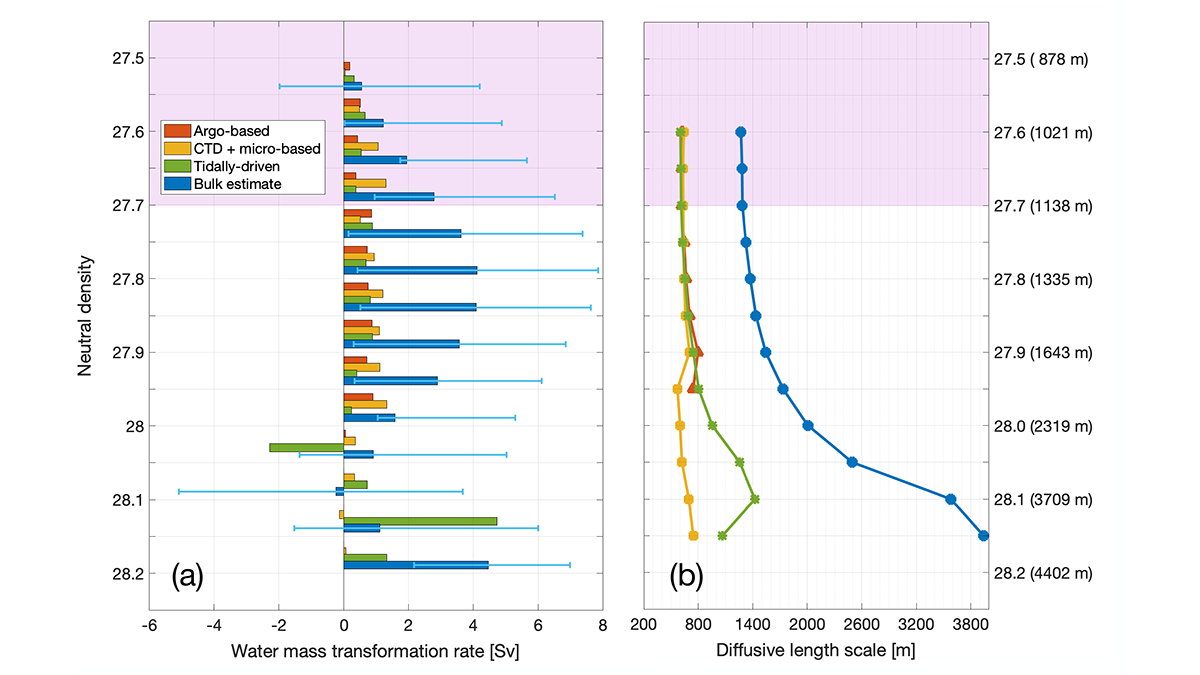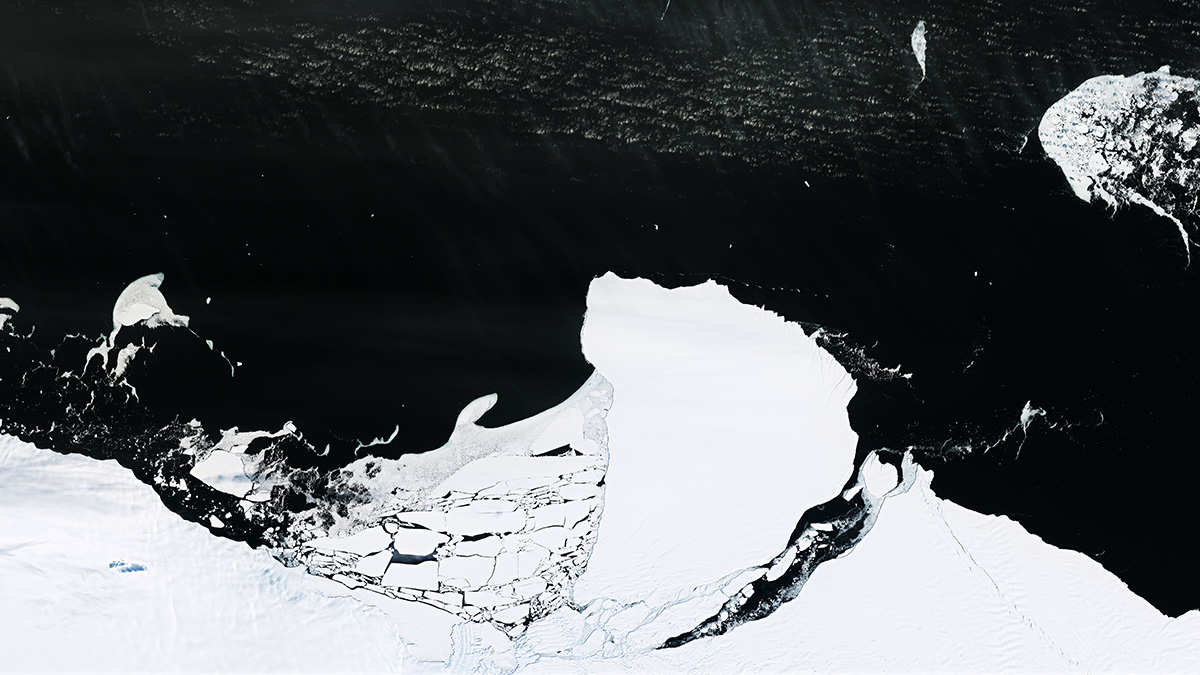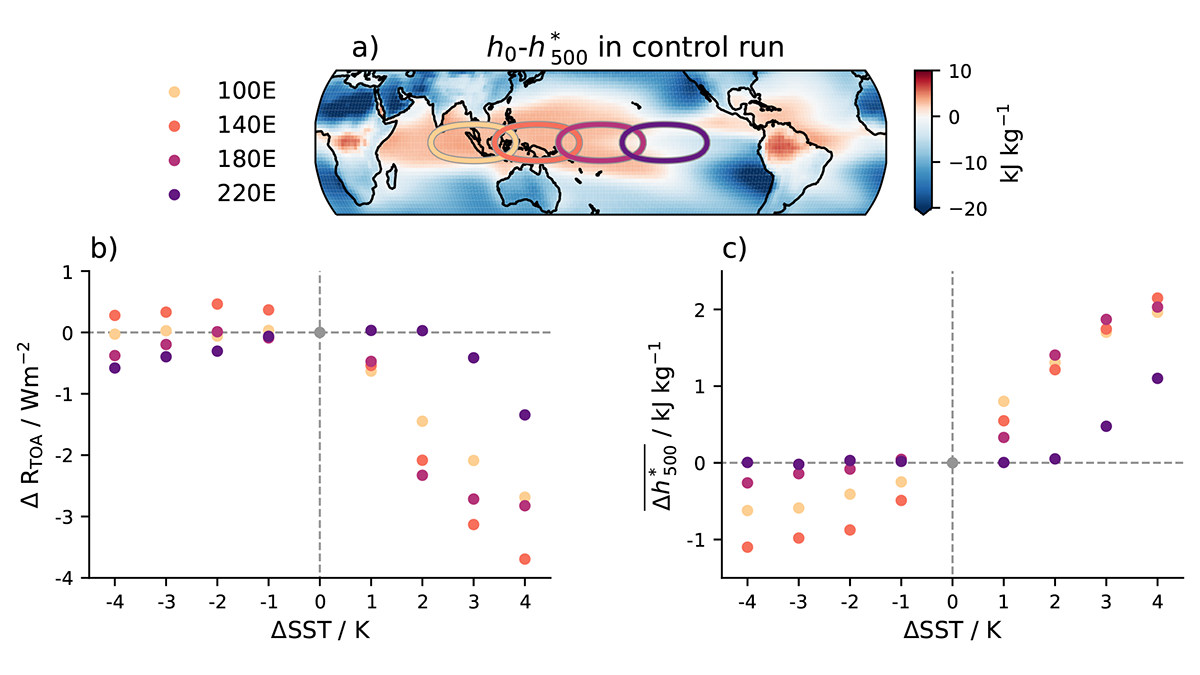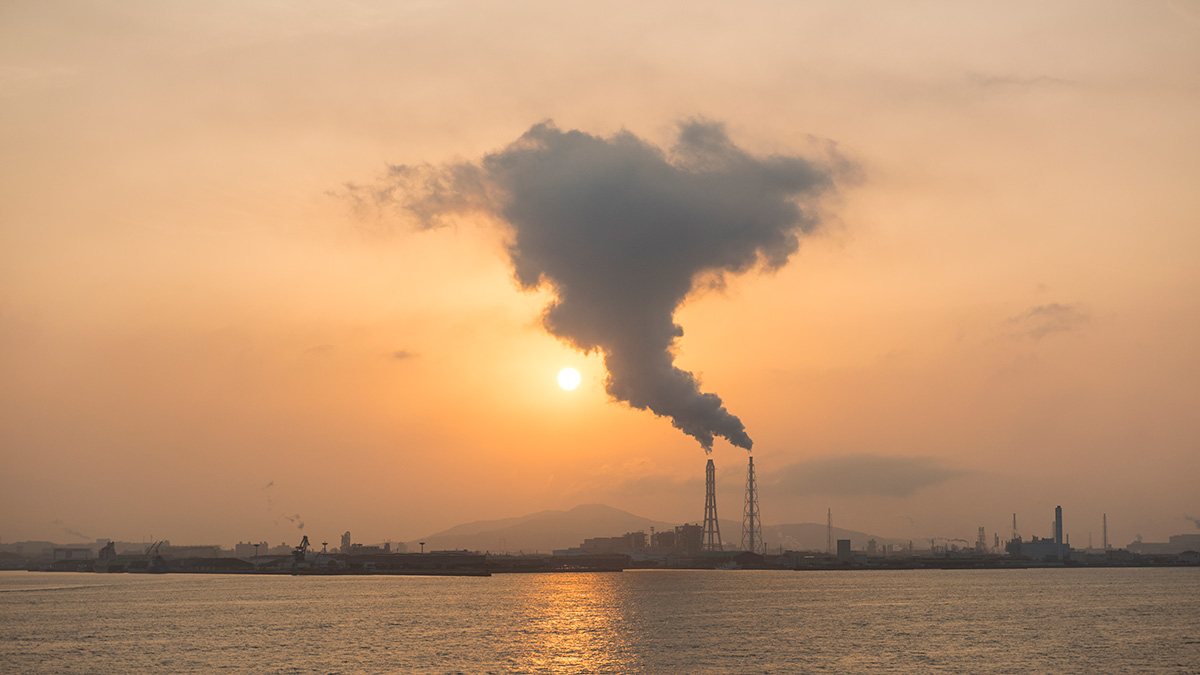Un grupo de científicos investigaron el impacto de los cambios estacionales en la cantidad y velocidad del carbono que viaja desde la superficie al océano profundo.
Oceans
Diapycnal Mixing and the Atlantic Ocean Overturning Circulation
Quantitative observation-based estimates highlight the contribution of diapycnal mixing to the Atlantic Meridional Overturning Circulation, water mass formation, and tracer transfers and pathways.
Godzilla Gets a Forever Home on the Ocean Floor
The world’s largest oceanic core complex is named after the reptilian monster from Japanese science fiction. Parts of the seabed feature were recently christened with the beast’s anatomy.
Deep-Sea Sand and Where to Find It
Ancient underwater avalanches carried sand into the ocean’s abyss during a time when some least expected it.
Supercharged El Niño Could Speed Up Southern Ocean Warming
Projected changes to El Niño will likely accelerate warming of the deep oceans around the Antarctic, supplying heat that could drive ice loss and sea level rise.
Non-Linear Climate Response to Tropical Sea Surface Temperatures
A new study shows the importance of considering non-linear responses to isolated sea surface temperature (SST) changes and the implications for the linear frameworks used to quantify the SST pattern effect.
Bio-Argo Floats Reveal Phytoplankton Increase at Ocean Fronts
Bio-Argo floats and satellite altimeter data reveal that upwelling caused by confluent flow on the warm side of ocean fronts increases phytoplankton carbon and chlorophyll.
El dióxido de carbono antropogénico es rastreado hacia el océano
Con ayuda de un modelo de circulación oceánica, un equipo de investigadores logró etiquetar y rastrear el carbono emitido antropogénicamente para determinar si su destino es la atmósfera o el océano.
Rivers in the Sky Are Hindering Winter Arctic Sea Ice Recovery
Climate change is increasing the frequency of moisture-dumping atmospheric rivers in the Arctic. The storms are pushing back sea ice at a time of year when it should be expanding.
Making Sense of the Great Barrier Reef’s Mysterious Green Donuts
Researchers set sail to the Great Barrier Reef to study how ring-shaped algae deposits formed and evolved, what feeds them, and the diversity of creatures that call them home.










